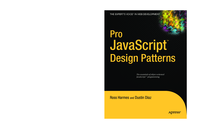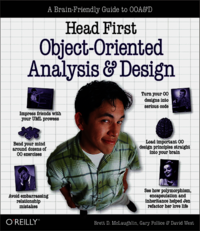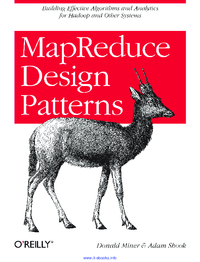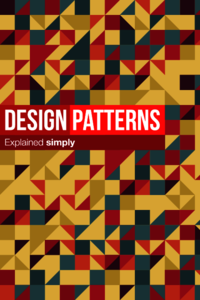Etiqueta "design patterns"
Se han encontrado 4 Coincidencias
Pro JavaScript Design Patterns
144 Visitas | 253 Descargas | 2013-09-24 13:23:10 | dpr
JavaScript is at a turning point. The language and those who program with it have matured. People are starting to realize that it is a complex subject, worthy of further study. Design patterns have been used in programming for years. They were first formally documented in Design Patterns by Erich Gamma, Richard Helm, Ralph Johnson, and John Vlissides (affectionately known as the Gang of Four) and have been applied to countless object-oriented languages. Part of the appeal of design patterns is that they can be used uniformly over many different languages and syntaxes. The basic structure stays the same; only the details change. It is fairly easy, for instance, to take a pattern implemented in Java and convert it to C++.

Head-First Object Oriented Analysis & Design
113 Visitas | 234 Descargas | 2013-10-03 13:37:26 | efirvida
This is a refreaching look at the subject of OOA&D. There are many books on the market that spend a lot of time telling you why, but do not actually enable the practitioner to star work on a project.

MapReduce Design Patterns
MapReduce Design Patterns
80 Visitas | 89 Descargas | 2015-12-11 18:28:50 | pecarrazana
MapReduce is a computing paradigm for processing data that resides on hundreds of computers, which has been popularized recently by Google, Hadoop, and many others. The paradigm is extraordinarily powerful, but it does not provide a general solution to what many are calling “big data,” so while it works particularly well on some problems, some are more challenging. This book will teach you what problems are amenable to the MapReduce paradigm, as well as how to use it effectively. At first glance, many people do not realize that MapReduce is more of a framework than a tool. You have to fit your solution into the framework of map and reduce, which in some situations might be challenging. MapReduce is not a feature, but rather a con? straint. This makes problem solving easier and harder. It provides clear boundaries for what you can and cannot do, making the number of options you have to consider fewer than you may be used to. At the same time, figuring out how to solve a problem with con? straints requires cleverness and a change in thinking. Learning MapReduce is a lot like learning recursion for the first time: it is challenging to find the recursive solution to the problem, but when it comes to you, it is clear, concise, and elegant. In many situations you have to be conscious of system resources being used by the MapReduce job, especially inter-cluster network utilization. The tradeoff of being confined to the MapReduce framework is the ability to process your data with dis? tributed computing, without having to deal with concurrency, robustness, scale, and other common challenges. But with a unique system and a unique way of problem solving, come unique design patterns.

Design patterns explained simply
Patrones de diseño de software
63 Visitas | 35 Descargas | 2021-12-31 04:44:44 | josedaniel
This book isn't an introduction to object-oriented technology or design. Many books already do a good job of that. This isn't an advanced treatise either. It's a book of design patterns that describe simple and elegant solutions to specific problems in object-oriented software design. Once you understand the design patterns and have had an "Aha!" (and not just a "Huh?" experience with them, you won't ever think about object-oriented design in the same way. You'll have insights that can make your own designs more flexible, modular, reusable, and understandable - which is why you're interested in object-oriented technology in the first place, right?
Contribuir
Usted puede contribuir con Libros UCLV, es importante para nosotros su aporte..
Contribuir